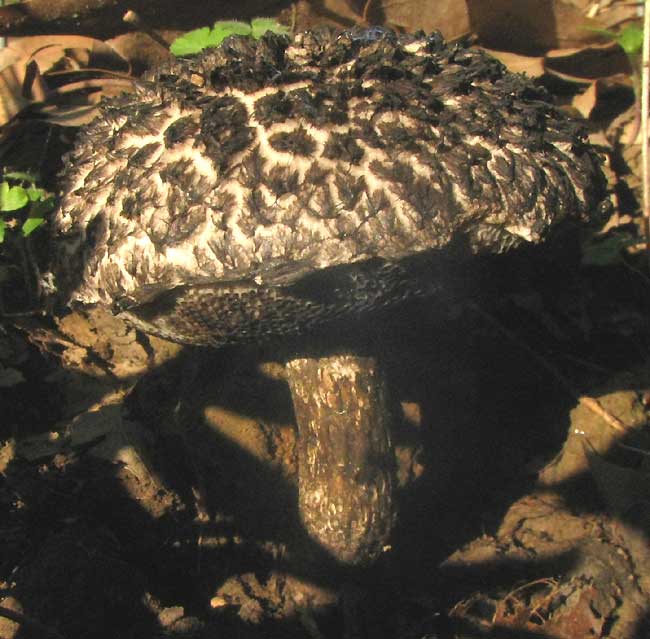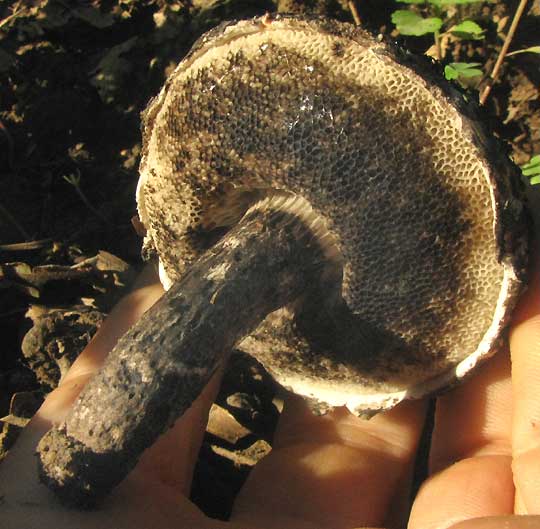Excerpts from Jim Conrad's
Naturalist Newsletter

from the June 10, 2012 Newsletter issued from the woods of the Loess Hill Region a few miles east of Natchez, Mississippi, USA
OLD MAN OF THE WOODS
We've gone for a couple of weeks without rain, so mushrooms aren't as plentiful as they could be. However, next to my collards plot I erected a trellis for morning-glory vines and I've been watering the vines. This week that's where one of the most common and easy to identify of our mushrooms emerged, a dark, curious-looking one with a very shaggy cap about three inches across (8cm), shown above.
It's the Old Man of the Woods, STROBILOMYCES FLOCCOPUS, whose main field mark is those large, blackish scales on the cap separated by narrow white areas. Also, you can see that on the cap's underside there are pores, not gills. A better view of that is below:

This being a pored mushroom, thus part of the group generally known as "boletes," and knowing that boletes typically are good eating, it's not surprising that the Old Man is edible. However, its flavor isn't anything special.
Ecologically, Old Man of the Woods forms mycorrhizal associations with the roots of hardwood trees. That means that its subterranean hyphae form sheaths around the roots, penetrating the roots somewhat, effectively increasing their surface area, thus enhancing their ability to absorb water and nutrients. The fungus benefits by having access to sugars and amino acids in the roots.
Old Man of the Woods occurs from Nova Scotia to Florida, west to Michigan and Texas.